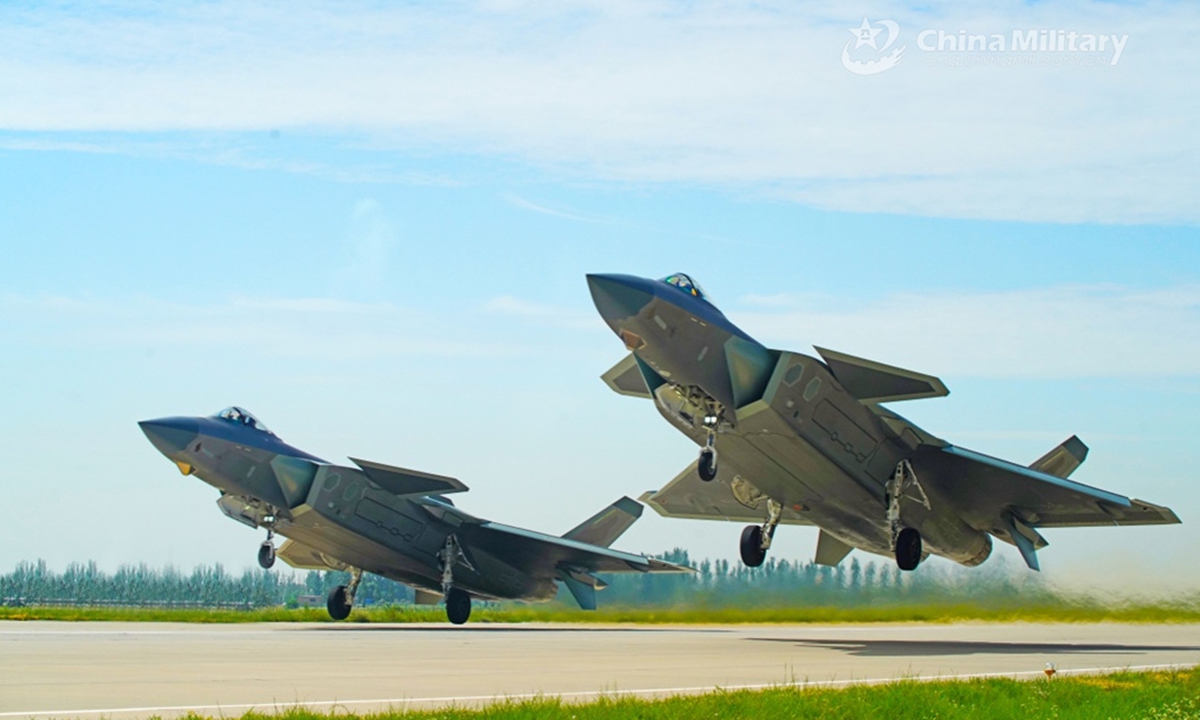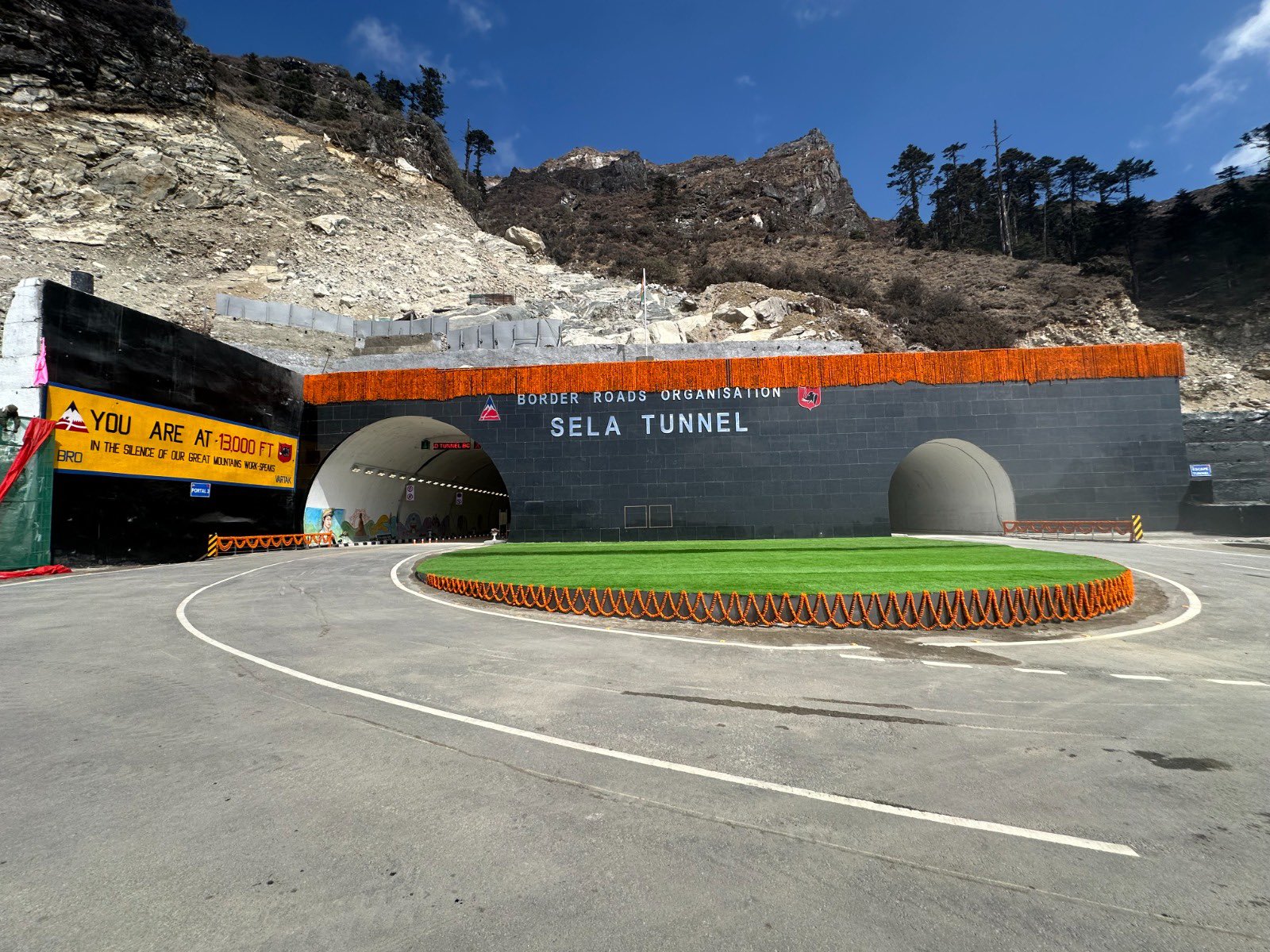In what seems to be an attempt to strengthen its military posture along the disputed border with India, China recently activated its second runway at the Hotan Air Base, located near India’s eastern Ladakh region.
The development was first reported by renowned OSINT analyst Damien Symon, who goes by the username @detresfa_ on Platform X. Damien published satellite imagery of the base on April 8, showing that the second runway had become operational. He underscored that the site has “undergone infrastructural improvements aimed at boosting operational capability & efficacy.”
Some Indian security experts noted that the move was aimed at facilitating the entry of more troops and equipment into the unrest-plagued region.
The images in question, as seen below, show that no major deployment has taken place despite the runway becoming operational. However, the newly constructed runway appears to be longer than the previous one. Additionally, new aprons and military buildings have also sprung up along the new Hotan runway.
The development is not particularly shocking for India since it was aware of ongoing construction at Hotan. Previous satellite images showed the development of an underground automated command and control center at Hotan.
Almost 4 years after it began construction, the second runway at Hotan Airbase now appears operational, pivotal in supporting #China's aerial operations near #Ladakh this site has undergone infrastructural improvements aimed at boosting operational capability & efficacy pic.twitter.com/ZVm6TVYkt7
— Damien Symon (@detresfa_) April 8, 2024
Lieutenant General Rakesh Sharma, who previously commanded the Ladakh corps overseeing Kargil, Siachen glacier, and eastern Ladakh, said on X: “Hotan is in the Tarim basin off Taklamakan Desert. It is a very important airfield! The area opposite Eastern Ladakh falls under Hotan Prefecture!”
It is believed that the Hotan Air Base would be used as a launch pad by the PLA Air Force (PLAAF) conducting crucial air operations against India in the event of a conflict. China has constantly been upgrading its military preparedness since the standoff with India began in eastern Ladakh in May 2020, despite a thaw in ties.
In 2020, China’s PLAAF carried out a massive build-up along the border at the Hotan Air Base. China has since deployed several fighter jets and drones at the airbase. In June 2022, for instance, the PLAAF stationed around two dozen frontline combat aircraft at Hotan, including the J-11 and the J-20 stealth fighter jets, as previously reported by EurAsian Times.
At that time, government sources said, “The Chinese earlier used to maintain detachments of MiG-21 class fighters there, but they have now been replaced with more capable and sophisticated aircraft and in larger numbers.” The J-20 is China’s most advanced fifth-generation stealth jet.
The Chinese Air Force has now have 25 frontline fighters at the Hotan air base which include J-11, and J-20 fighters. The Chinese earlier used to maintain detachments of MiG-21 class fighters there but they have now been replaced with more sophisticated aircraft in larger numbers pic.twitter.com/Y3ON8WtvDZ
— News IADN (@NewsIADN) June 11, 2022
The Chinese Air Force first deployed its J-20 fifth-generation jets close to Indian territory at the height of the conflict in 2020. According to government sources, the J-20s were reportedly spotted flying from the Hotan airbase in China’s Xinjiang province, where strategic bombers and other fighters were also stationed.
Other than Hotan, the PLAAF has reportedly been working to make other frontline bases operational and combat-ready. These bases have been improved and upgraded by building hardened shelters, extending runways, and deploying greater manpower to carry out more operations.
Last year, a set of satellite images revealed that China had expanded its infrastructure at airfields in Hotan, Ngari Gunsa, and Lhasa. These expansions include building more runways, stronger shelters to protect combat jets, and constructing more support and military operations buildings near the LAC.

Besides constructing a second runway at Hotan, China has also been engaged in constructing a second bridge at the Pangong Tso Lake, as previously reported by EurAsian Times based on the satellite imagery obtained by it. The goal of creating all this military and auxiliary infrastructure is to create offensive capabilities and enable quick army deployment.
India’s Infra Angers China
Following clashes in 2020 that claimed the lives of 20 Indian and 4 Chinese soldiers in the Galwan region of eastern Ladakh, India and China have been engaged in a military standoff at their shared border for almost four years.
In an all-new episode, Beijing and New Delhi engaged in a verbal spat over the opening of a strategically important tunnel in the northeastern Indian state of Arunachal Pradesh, highlighting India’s increasing emphasis on border infrastructure in the face of its deteriorating relationship with China.
The world’s longest twin-lane tunnel, the Sela Tunnel, was officially opened on March 9 by Indian Prime Minister Narendra Modi. It provides the Indian army with better operational and strategic capabilities by offering year-round, all-weather connectivity to Tawang and other forward areas bordering China.
The estimated cost of the 12-kilometer tunnel project, which includes more than 8 kilometers of the approach road, is 8.25 billion rupees (US$99 million). The tunnel is located at an elevation of 13,000 feet (3,962 meters).
However, since China has also laid claim to the state of Arunachal Pradesh, Chinese officials denounced Modi’s tunnel opening, referring to the region as an “inherent part of China’s territory.”

“We require the Indian side to cease any action that may complicate the boundary question … the Chinese military remains highly vigilant and will resolutely defend national sovereignty and territorial integrity,” a Defense Ministry spokesperson said.
In response, Indian authorities branded Beijing’s statements as “absurd,” maintaining that Arunachal Pradesh was “an integral and inalienable part of India.” The tunnel project is a part of India’s all-round efforts to develop Indian territory along the disputed border.
More than half of the 118 projects that India’s Border Roads Organization started last year to construct airfields, bridges, and roads were in Arunachal Pradesh and Ladakh, close to the disputed border with China.
This kind of development has raised Beijing’s hackles, and it has charged India with “complicating the boundary question and disrupting the situation in the border areas between the two countries.”
However, analysts note that India is correcting an imbalance that resulted from decades of Chinese infrastructure and road construction, which gave Beijing a considerable advantage over New Delhi when it came to sending troops to border regions and setting up hundreds of “xiaokang,” or villages, which Beijing disputes are built to bolster its territorial claims. So, China may not be the only one developing infrastructure along the LAC.
Needless to say, both sides have continued to ramp up their combat readiness along the disputed border while also trying to de-escalate tensions through talks held between high-ranking officials.
- Contact the author at sakshi.tiwari9555 (at) gmail.com
- Follow EurAsian Times on Google News




